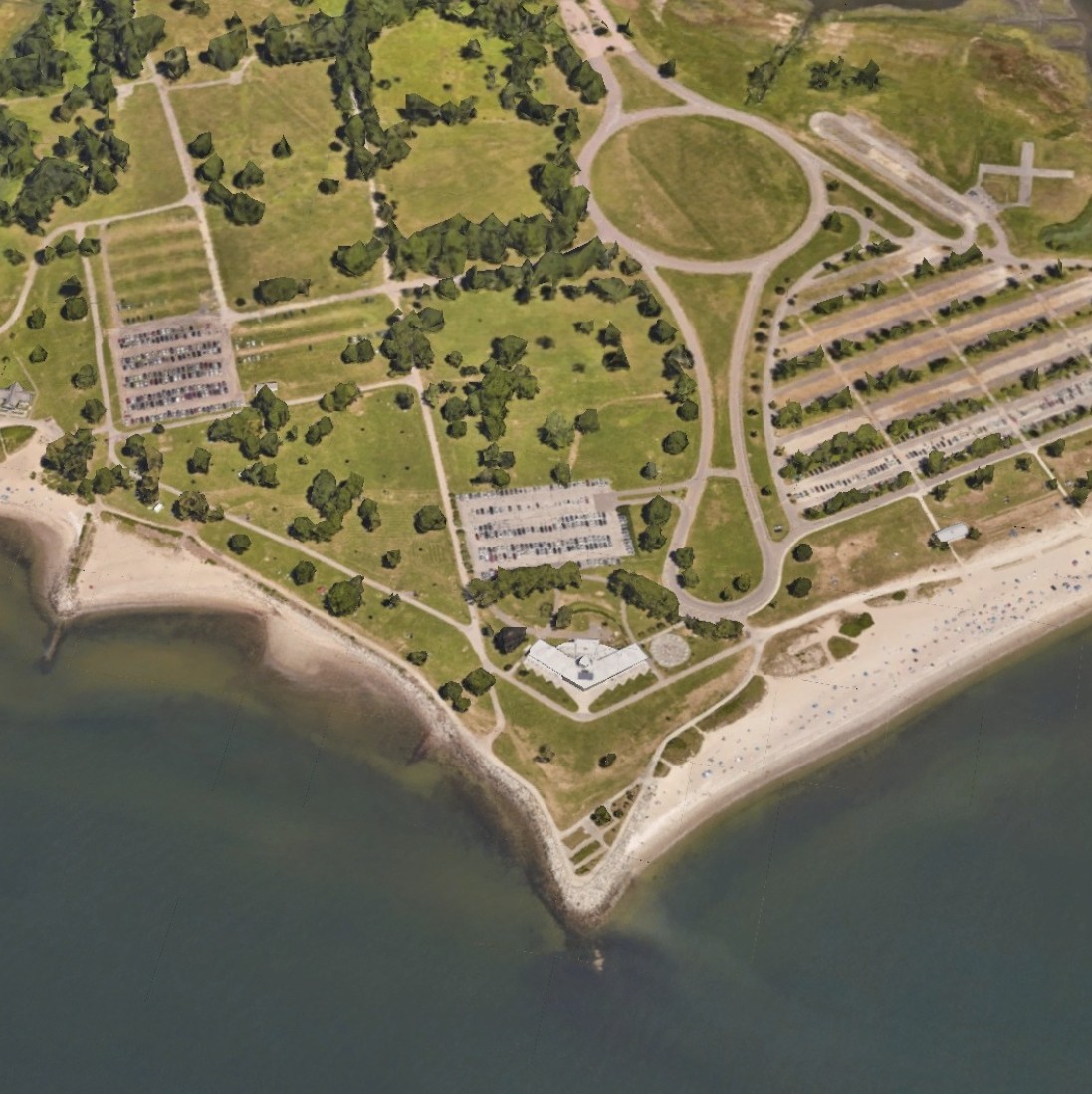Sherwood Island State Park holds the honor of being Connecticut’s oldest state park, but its journey to public ownership was anything but simple. Though the state purchased its first parcel of land for the park in 1914, Sherwood Island could not truly take shape as a public space until 1937, after decades of fierce battles between conservationists and powerful landowners who sought to keep the shoreline for themselves.
The Early Years (1600s-1800s): A Land of Farmers and Oystermen
Long before it became a beloved public retreat, Sherwood Island was a patchwork of farmland, tidal marshes, and bustling mill activity. The area’s history dates back to 1639 when Fairfield was settled in a place called Unquowa, a name given by the local Pequot people. As settlers expanded westward, early farmers followed their cattle to a picturesque coastal stretch the Native Americans called Machamux, meaning “The Beautiful Land.”
By the late 1700s, the land was known as Fox Island, where the Sherwood family established itself as one of the most prominent landowners. They purchased the Mill Pond gristmill in 1790, an essential operation that processed locally grown corn into kiln-dried meal, which was shipped as far as the West Indies. The Sherwoods farmed the uplands, growing onions and potatoes bound for New York markets while also harvesting oysters from the adjacent salt marshes.
As the 19th century progressed, the Green’s Farms community, which encompassed Sherwood Island, became home to an increasing number of wealthy families who built mansions along Beachside Avenue. This early trend of private ownership and exclusivity would later fuel a bitter struggle over public access to the land.
The Fight for a State Park (1900-1937): The 23-Year War
As Connecticut rapidly industrialized in the late 19th and early 20th centuries, public green spaces became increasingly scarce. Recognizing the need for public parks, the newly formed Connecticut State Park Commission set out to acquire shoreline property for preservation. In 1914, the state took its first step toward creating Sherwood Island State Park by purchasing a small parcel of land.
However, powerful local landowners vehemently opposed the park’s creation. They feared that a public beach would attract large crowds from nearby industrial cities, disrupting their privileged enclave. This led to an extended battle—now known as The 23-Year War—between conservationists and landowners who sought to block the park’s development through legal maneuvers and political influence.
Leading the fight for public access were figures like Albert Milford Turner, Connecticut’s first State Park Field Secretary, and William H. Burr Jr., a fruit farmer and park advocate. Their efforts were met with fierce resistance, particularly from George W. Gair, a wealthy landowner who spearheaded a campaign to halt the park’s progress. Gair and his allies lobbied town officials to block funding for the park, bought up key access points, and even authorized a drainage ditch to physically cut off public entry.
Another major proponent of the park was Elsie Hill, a feminist activist who reframed the debate by arguing that Sherwood Island should be accessible to all Connecticut residents, not just the elite. In 1929, she organized a mass picnic on the disputed land, where hundreds of supporters crossed Gair’s barriers to stake their claim to the beach.
The New Deal Breakthrough and Park Completion (1937-1940s)
The tide finally turned in the 1930s with the election of Governor Wilbur Cross, a progressive Democrat who saw state parks as vital public assets and job-creation projects during the Great Depression. His administration, aligned with President Franklin Roosevelt’s New Deal, secured federal funding to develop long-stalled park initiatives.
In 1937, after more than two decades of conflict, the Connecticut legislature allocated funds to finalize Sherwood Island’s development. The park was expanded, infrastructure was built, and roads were constructed to ensure public access. By the early 1940s, Sherwood Island State Park was officially open, marking a victory for conservationists and cementing its place as Connecticut’s first state park.
Geological Features: A Landscape Formed by Ice and Time
While its history is fascinating, Sherwood Island’s natural landscape also tells an incredible story. The park’s beaches showcase an array of geological formations, including layers of red garnet, black magnetite, and tan quartz sand that shift with the tide.
At Sherwood Point, large glacial erratics—boulders deposited by ice sheets over 12,000 years ago—dot the shoreline, remnants of the last Ice Age. The highest point in the park is a partially eroded drumlin, a hill formed by glacial deposition. Two distinct jetties at the park contain different rock compositions: one made of dark basalt, a volcanic rock, and another of schist and gneiss, metamorphic rocks that formed under intense heat and pressure.
Sherwood Island’s Role in 9/11 Memorialization
Sherwood Island’s significance extends beyond its natural beauty and historical battles. On September 11, 2001, as smoke from the World Trade Center attacks rose over the horizon, Connecticut residents gathered at the park’s point, where they could see the devastation unfolding in New York City.
In the aftermath, Sherwood Island became a staging area for relief efforts, with volunteers and emergency personnel organizing aid from the park. The site was later chosen as Connecticut’s 9/11 Living Memorial, dedicated in 2002 to honor the 161 state residents who lost their lives that day. A black cherry tree now stands as a solemn reminder, alongside a low granite monument inscribed with the words: “The citizens of Connecticut dedicate this living memorial to the thousands of innocent lives lost on September 11, 2001, and to the families that loved them.”
Legacy and Importance Today
Sherwood Island State Park stands today as a testament to the power of public perseverance over private interests. Its creation reflects a broader American struggle over access to natural resources, balancing preservation with public enjoyment. Thanks to the efforts of activists, reformers, and everyday citizens, the park remains a cherished retreat, drawing thousands of visitors each year to its scenic beaches, walking trails, and open fields.
Cress is a leading real estate agent serving buyers of high-end properties in Fairfield County, CT. What sets us apart from other agents is our unwavering commitment to offering the lowest fees in the industry for the level of service we provide. We believe you shouldn’t have to sacrifice quality for affordability.
Our flat fee buyer’s agent services and commission rebate models make luxury real estate more accessible, delivering top-tier service and unmatched value. By streamlining operations and leveraging technology, we pass those savings directly to you, ensuring an exceptional real estate experience. For more information, visit www.callcress.com.
Doug Cress
(212) 203-5251
doug@cress.co
License #RES.0832278
Fairfield County, CT
Enterprise Realty Inc.
License #REB.0751297
45 Huntington Plaza
Shelton, CT 06484




